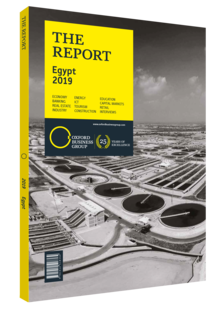Investments in the Great Pyramids of Giza should improve experiences of tourists in Egypt
The last remaining of the Seven Wonders of the Ancient World, Egypt’s Great Pyramids of Giza, have drawn millions of tourists interested in exploring the tombs and ancient artefacts discovered along the Nile River. Thousands of antiquities are stored in the Egyptian Museum of Antiquities in Cairo, with many others showcased in museums elsewhere in Egypt and around the world.
Grand Egyptian Museum
The new Grand Egyptian Museum (GEM) is set to open in the shadow of the pyramids. Scheduled to open in 2020, the $1bn museum plans to attract 5m visitors a year, providing a boost to the tourism industry. Upon completion the GEM will be the country’s largest museum and world’s most extensive archaeological museum, covering 50 ha and housing over 100,000 artefacts.
Among the treasures to be displayed is the complete Tutankhamen collection, including the famous mask of King Tut, comprising approximately 5000 pieces. The museum will also include a conference centre, an 800-to 1000-seat auditorium, educational and research facilities, restaurants overlooking the Great Pyramids and a business centre. Additionally, an on-site conservation centre will be used for the cleaning, cataloguing and restoring of artefacts.
The project was funded by the Japanese government, which provided initial loans of $320m and $450m through the Japan International Cooperation Agency, and the Ministry of Antiquities. Construction began in 2005, and the first and second phases were completed in 2008. The project experienced delays largely due to engineering issues and political turmoil.
Giza Plateau
Located on an adjacent site 2 km from the GEM, the Giza Development Plateau Project is scheduled to be completed in time for the museum’s opening. The project aims to improve the area around the Great Pyramids and the Sphinx by implementing panoramic pathways for guided and unguided tours, a new solar-powered lighting system to illuminate the Pyramids, 50 marketplaces for vendors, a visitor centre, buildings for tourism police and augmented reality screens to modernise Egypt’s tourist experience. The total estimated cost of the project is LE349m ($19.6m).
New Airport
The opening of the Sphinx International Airport will facilitate access to the GEM and the Giza Plateau. Trial flights began in January 2019, and officials expect to have the airport fully operational by 2020, coinciding with the opening of the museum. The airport, which was constructed by the Armed Forces Engineering Authority in cooperation with the Egyptian Company for Industrial Investment, is located 12 km from the Pyramids and the Giza Development Plateau, and can handle nine large aircraft and charter flights. Constructed in 12 months, the $17m airport can accommodate up to 300 passengers per hour. Plans to link the GEM to Cairo via the metro service are at an early stage.
Mixed-Use
The Giza area will also be home to the Sun Capital mixed-use property development. Spanning 220 ha, the mega-project is divided into 15 sections that will include business and residential areas, as well as a shopping mall, universities and hotels. The Fairmont, InterContinental and Holiday Inn hotel groups will each occupy space in the development, offering accommodation to tourists visiting the area. The project is to be delivered in six phases and also provide over 12,000 residential units developed by local property development company Arabia Holdings in partnership with the Ministry of Housing. Construction has already begun, residential units are already for sale and the InterContinental is expected to open its doors in 2023.
Major changes are under way in Giza as officials target both tourists and residents with the new museum and improved services. The GEM is expected to be a significant draw, allowing visitors to conveniently explore the country’s history with the pyramids as a backdrop. The new airport, hotels, shopping centres and other facilities will also enhance the visitor experience, as Giza’s renewal positions the region as a major asset in Egypt’s tourism portfolio during the coming years.
You have reached the limit of premium articles you can view for free.
Choose from the options below to purchase print or digital editions of our Reports. You can also purchase a website subscription giving you unlimited access to all of our Reports online for 12 months.
If you have already purchased this Report or have a website subscription, please login to continue.

